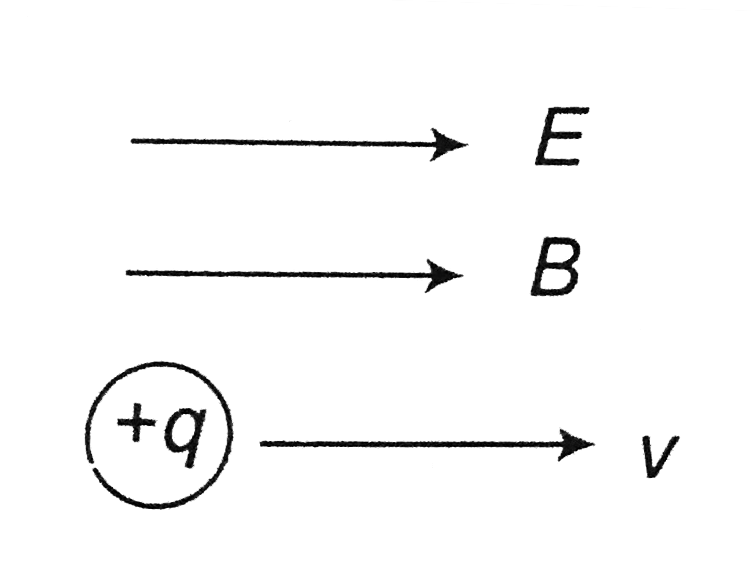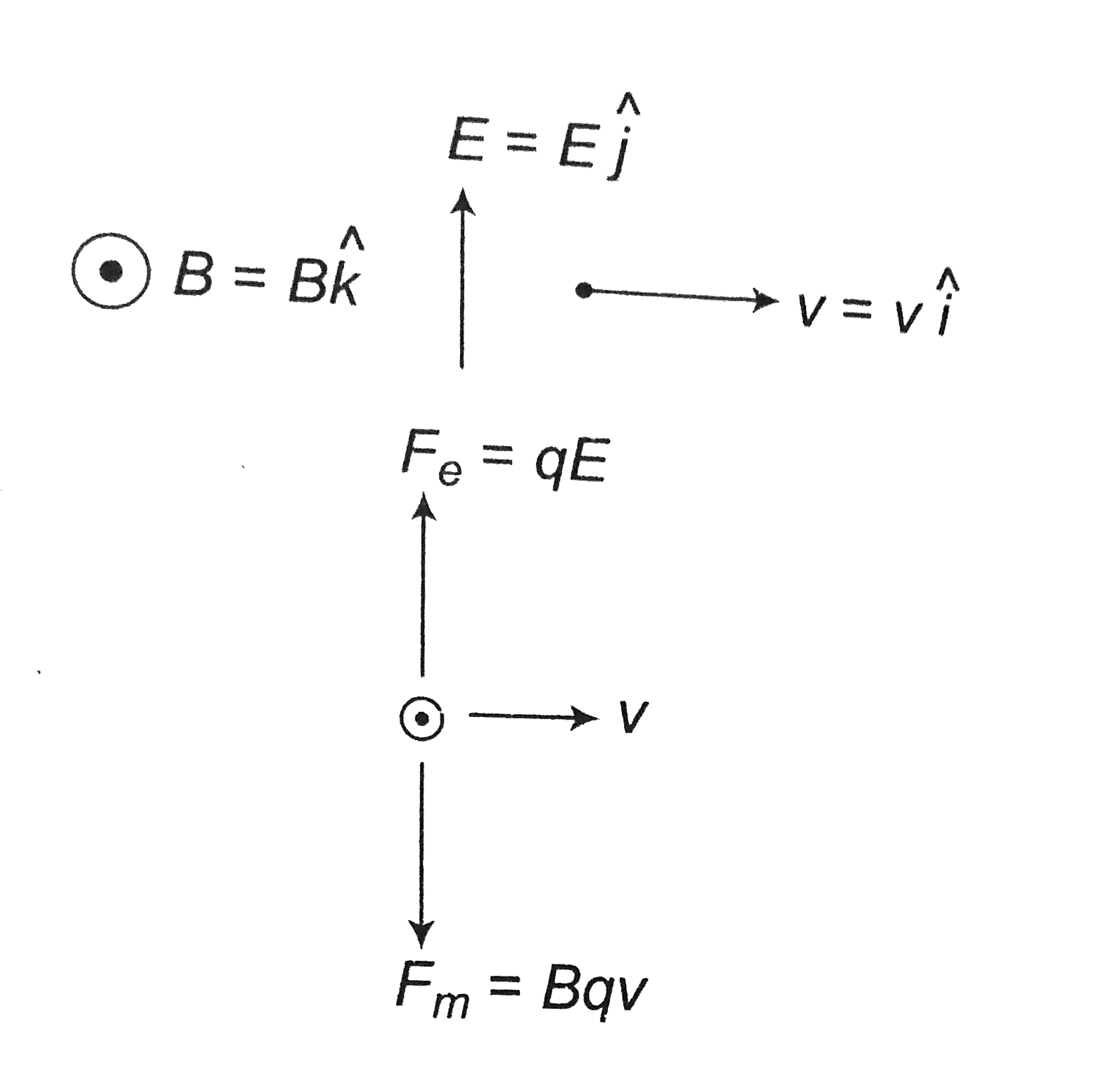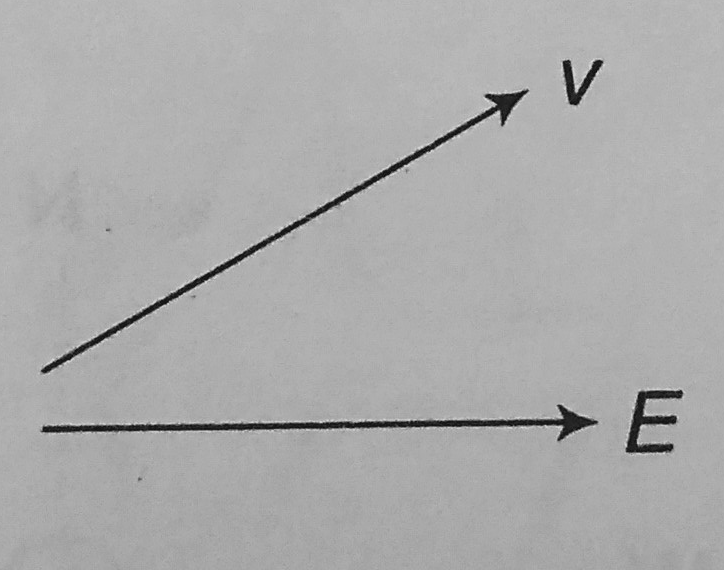If a charged particle goes unaccelerated in a region containing electric and magnetic fields,
(i) →E must be perpendicular to →B
(ii) →v must be perpendicular to →E
(iii) →v must be perpendicular to →B
(iv)E must be equal to vB
A
(i), (ii)
B
(ii), (iv)
C
(ii), (iii)
D
(i), (iv)
Video Solution
Text Solution
The correct Answer is:A
The particle is moving in a straight line.
(i) →E∣∣∣∣→B,→v∣∣∣∣→E
Fm=0,Fe=qE
→E
→B

The path is straight line, O.K.
(ii) vec(E) cancel(||) vec(B)
It may be

Fe=Fm, net force =0
O.K.
(iii) vec(v) || vec(B), vec(E) cancel(||) vec(B), F_(m) = 0

The path will be parabola
(iv) vec(E) || vec(B), vec(v) cancel(||) vec(E), The path will not be straight line
|
Updated on:21/07/2023
Topper's Solved these Questions
Similar Questions
Knowledge Check
- Question 1 - Select One
If →A is perpendicular to →B, then
A→A×→B=0B→A.[→A+→B]=A2C→A.→B=ABD→A.[→A+→B]=A2+AB - Question 2 - Select One
If a charged particle goes unaccelerated in a region containing electric and magnetic fields,
(i) →E must be perpendicular to →B
(ii) →v must be perpendicular to →E
(iii) →v must be perpendicular to →B
(iv)E must be equal to vBA(i), (ii)B(ii), (iv)C(ii), (iii)D(i), (iv) - Question 3 - Select One or More
If →v1+→v2 is perpendicular to →v1−→v2, then
A→v1 is perpendicular to →v2.B|→v1|=|→v2|C→v1 is a null vectorDThe angle between →v1 and →v2 can have any value
The vectors →a and →b are perpendicular if :
View SolutionThe vector (→a+3→b) is perpendicular to (7→a−5→b) and (→a−4→b) is perpendicular to (7→a−2→b). The angle between →a and →b is :
View SolutionTwo vector →A and →B have equal magnitudes. Then the vector →A+→B is perpendicular :
View SolutionThe resultant of →Aand→B is perpendicular to →A. What is angle between →Aand→B ?
View SolutionGiven that →A+→B=→C and that →C is perpendicular to →A Further if ∣∣→A∣∣=∣∣→C∣∣, then what is the angle between →A and →B
View Solution

